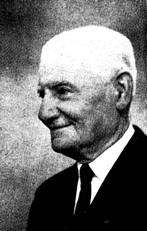
If you find the following mix of machine translation and my own editing horrific enough you may prefer to read the original French itself that I copy afterwards. But first, some background will help. Earlier in the article several redactions of Paul’s epistles have been postulated (credit to Turmel):
The original letters of Paul:
inspired by his faith in the forthcoming restoration of the kingdom of Israel which had been announced by Jesus and which constituted the initial substance of the Gospel.
A second redacted version had been attributed to Marcion and
corrected this messianic nationalism by the anti-Jewish gnosis of Marcion.
A third series of redactions produced the versions closer to what we have today, and
maintained the Gnostic Spiritualism of [Marcion’s edition] by dismissing or hiding its anti-Judaism.
The following passage we read a modified hypothesis:
(2) After the revolt of the Jews in 66 and their final crushing in 70, a strong current of anti-Judaism spread in the eastern part of the Roman Empire but especially in Syria. The Judeo-Christians of Jerusalem had retreated to the confines of Transjordan, where they lingered, under the name of “Nazarenes” or “Ebionites”, away from the rest of the Christianity, almost foreign to his life and evolution, so that they soon became heretics.
Antioch became the great metropolis of the Christian world. There was formed a “school of theology” which claimed Simon, the former Esmoun of the Phoenician coast, became the saviour god of the Samaritans. It repudiated the God of the Jews, considered the spirit of evil. It was said that Simon, whose name means “obedient”, had come from heaven to obey the will of the Most High and bring to men the “Gnosis”, that is, the true knowledge, that of their origin, of their nature and their end. The mind, it was said, came from God but fell because of an original fault, in the bonds of the flesh. It can recover its original purity and return to lost Paradise only by rejecting the traditional laws, especially those of the Jews, made to enslave him, and professing a docile faith in the liberating doctrine of Simon. With him, by the grace of the supreme God of whom he is sent, one is freed from sin. It is liberated from this mortal body to reach the life of the spirit by the practice of mortification, abstinence and continence.
It is a Christian transposition of this simonian gnosis offered to us in the econd redaction of Paul’s epistles. It differs singularly from the first. If it was added by a series of skilful interpolations and convenient suppressions, it was because she found there points of attachment which allowed her to benefit from the prestige of the Apostle without risking the disfavor of novelty in religion.
The original
(2) Après la révolte des Juifs en 66 et leur écrasement final en 70, un fort courant d’anti-judaïsme se répandit dans la partie orientale de l’empire romain mais surtout en Syrie. Lés Judéo-Chrétiens de Jérusalem s’étaient repliés sur les confins de la Transjordanie, où ils végétèrent, sous le nom de « Nazaréens » ou d’ « Ebionites », à l’écart du reste de la Chrétienté, presque étrangers à sa vie et à son évolution, de sorte qu’ils firent bientôt figure d’hérétiques.
Antioche devint la grande métropole du monde chrétien. Il s’y était formé une Ecole de théologie qui se réclamait de Simon, l’ancien Esmoun de la côte phénicienne, devenu le Dieu Sauveur des Samaritains. L’on y répudiait le Dieu des juifs, considéré comme le Génie du mal. On y disait que Simon, dont le ùom signifie « obéissant » était venu du ciel pour obéir à la volonté du Très-Haut et apporter aux hommes la « Gnose », c’est-à-dire la Science véritable, celle de leur origine, de leur nature et de leur fin. L’esprit, expliquait-on, est issu de Dieu mais tombé par suite d’une faute originelle, dans les liens de la chair. Il ne peut recouvrer sa pureté première et regagner le Paradis perdu qu’en rejetant les lois traditionnelles, surtout celles des juifs, faites pour l’asservir, et en professant une foi docile en la doctrine libératrice de Simon. Avec lui, par la grâce du Dieu suprême dont il est l’envoyé, on s’affranchit du péché. On se libère de ce corps mortel pour atteindre à la vie de l’esprit par la pratique de la mortification, de l’abstinence et de la continence.
C’est une transposition chrétienne de cette Gnose simonienne que nous offre la seconde rédaction des Epîtres de Paul. Elle diffère singulièrement de la première. Si elle lui a été adjointe par une série d’interpolations ingénieuses et de suppressions opportunes, c’est qu’elle y trouvait des points d’attache qui lui permettaient de bénéficier du prestige de l’Apôtre sans risquer la défaveur qui s’attache aux nouveautés en matière de religion.
Alfaric, Prosper. 1956. “Les Epitres de Paul.” Bulletin Du Cercle Ernest Renan 35 (April). p. 4
Please note, though, that I present the above as a summary of an idea that has connections with others that have been presented on this blog, especially though Roger Parvus’s posts — in the last of which he finds himself leaning towards a historical Jesus at the root of it all. As for my own views they are far from decided. There is simply so much material I have yet to consider and think through.
